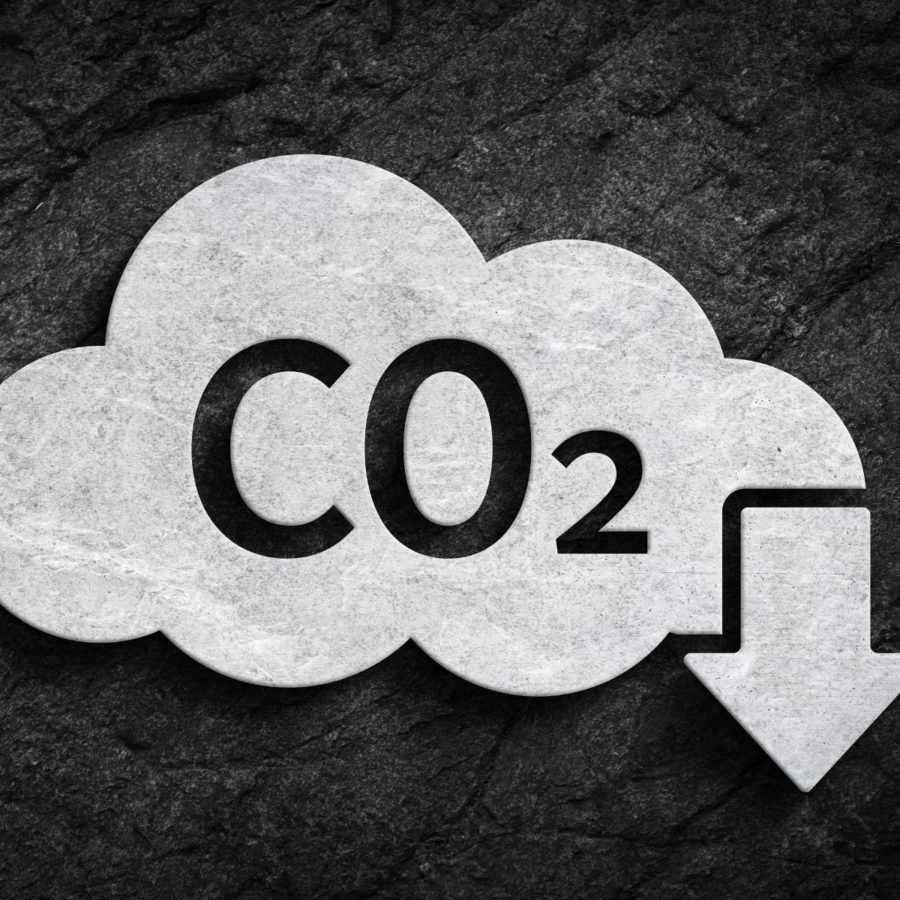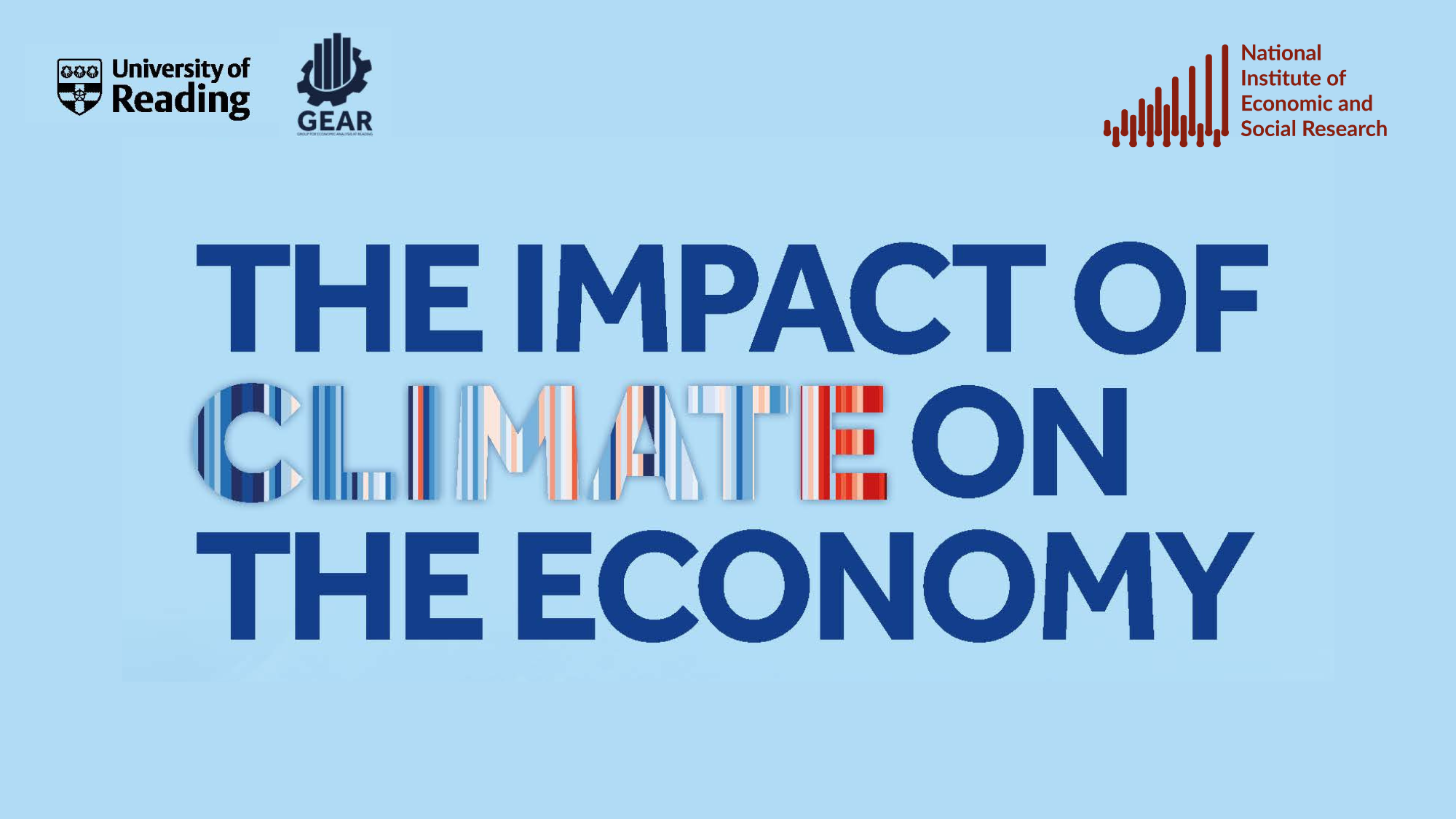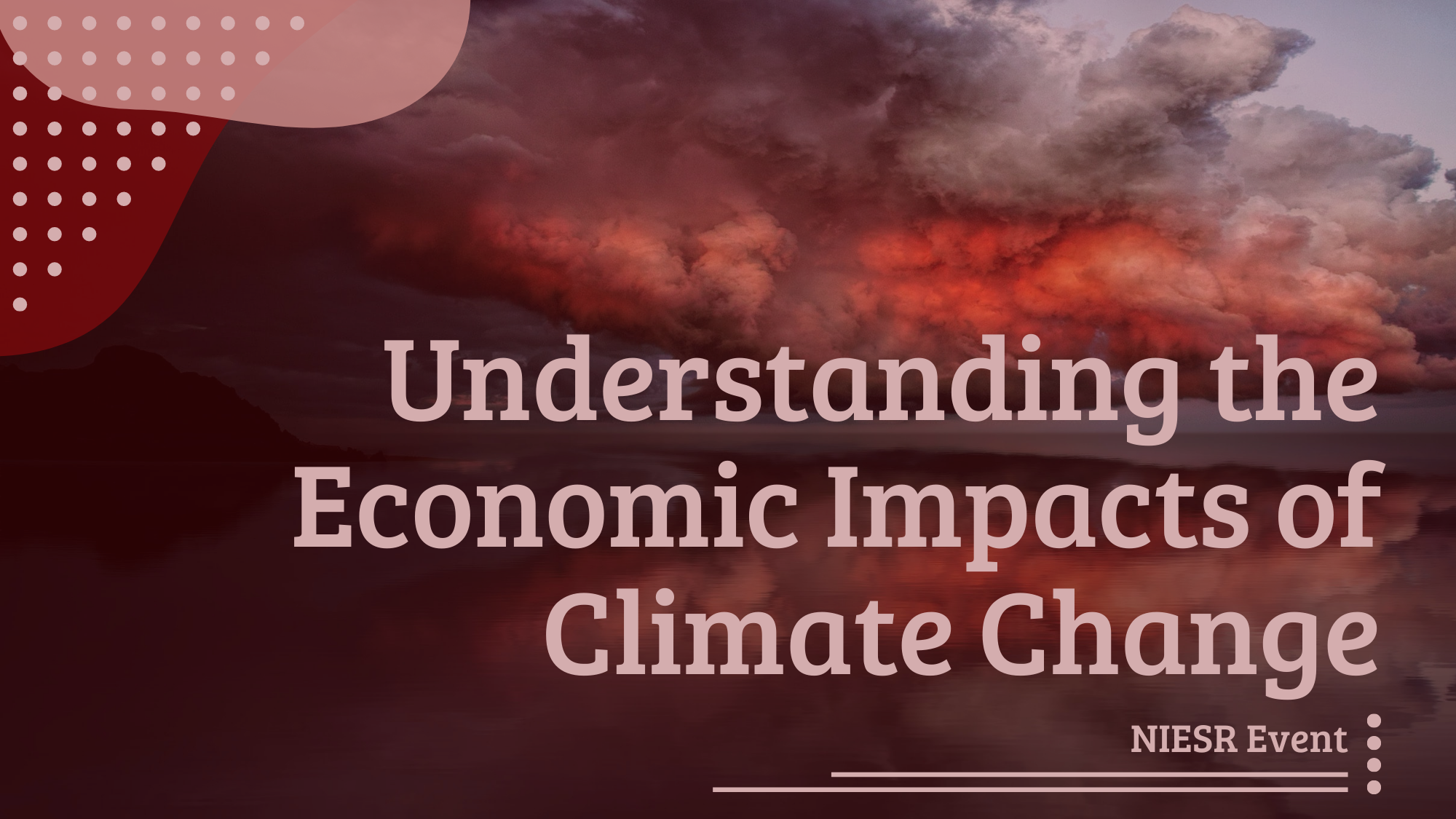The Macroeconomic Effects of Carbon Pricing
With the increasing interest in climate change and the drive towards net zero, environmental policy is very much in the public debate. Clearly, the move to net zero will require a substantial rise in the price of carbon emissions. For our Monday Interview, we asked Kemar Whyte to explain what this means for the wider economy.

We are all worried about global warming. What policies can governments put in place to get us to net zero?
Climate change policies such as carbon taxes and emissions trading schemes (ETSs) have become key policy tools to reduce greenhouse gas (GHG) emissions and limit global temperature increases. A carbon tax, for example, places a fixed price per tonne on GHG emission, whilst a ‘cap and trade’ policy sets a cap on the total amount of certain GHG that can be emitted. In a joint work with Dawn Holland, I focus on the macroeconomic implications from a sharp and sudden rise in the price carbon. However, there are other strategies and policies that can be implemented to help get us to net zero. For example, the UK government have proposed contract auctions for renewable power, a zero-emission vehicle mandate, an obligation on boiler manufacturers to grow the heat pump market, grants and contracts for capture, usage and storage (CCUS) and hydrogen use. Further, we also recognise that as well intentioned as carbon pricing strategies such as a carbon tax might be, the approach can lead to wildly inconsistent incentives to reduce emissions if not well designed. Overall tax rates on emissions can vary dramatically, including by the source of the emissions and the type of end user. Therefore, setting highly uneven incentives would be an inefficient way to reduce emissions and could make the transition to net zero excessively costly.
Concentrating on a carbon tax, through what channels might it affect the demand for carbon and the macroeconomy more generally?
A carbon tax has features of a supply shock in that it raises the cost of production, while the inflationary impacts reduce demand. The tax revenue collected improves the government budget balance, creating fiscal space.
The majority of global CO2 emissions stem from burning fossil fuels. Therefore, a carbon tax has a direct impact on the cost of burning fossil fuels, shifting the relative costs of primary fuel sources in proportion to the carbon emitted by each fuel. This can be expected to trigger a decline in demand for carbon-heavy fuels such as coal and oil.
The carbon price will raise the average price of primary fuel inputs, even after allowing for the shift in energy mix. As a result, total primary fuel consumption declines, leading to a fall in the total energy input into the economy. This permanently restricts productive capacity unless the decline in primary fuel consumption is fully offset by energy efficiency gains.
The decline in demand for carbon-heavy fuels can also be expected to put downward pressure on the (pre-tax) price of fossil fuels. Countries that continue to rely heavily on fossil fuel exports will suffer a significant loss in potential export revenue, stemming from both a decline in the volume of demand for fossil fuels and a decline in the value of each tonne of fossil fuel exported. This will deliver significant terms of trade losses for fossil fuel exporters, acting as a constraint on GDP as income losses feed into lower levels of domestic demand.
Meanwhile, fossil fuel importers benefit from the lower import price, which offsets some of the inflationary impacts of the carbon price itself. The magnitude of terms of trade shocks experienced in each country will depend on factors such as the share of domestic income derived from fossil fuel exports, the flexibility of the exchange rate regime, and the capacity for and speed of structural transition in the economy towards low-carbon industry and domestically produced renewable energy sources.
How have you looked at this in your work?
We used the National Institute Global Macroeconomic Model (NiGEM) to illustrate the expected macroeconomic fallout from a sharp and unexpected rise in the price of carbon. The rise in carbon tax is accompanied by a temporary rise in global credit constraints, to capture the heightened uncertainty triggered by the sudden shift in asset valuations. The NiGEM climate model is an expanded version of the standard NiGEM model that introduces climate policy instruments and other channels needed to model energy transition and physical climate shocks. In our recent work, we used the NiGEM Climate model to test the following scenarios:
- An unanticipated permanent rise in the carbon price by $100 per tonne of CO2 in all countries implemented through an explicit carbon tax with the potential to generate government revenue. A sudden and sharp rise in carbon price is widely viewed as a key concern within the financial sector. Stress testing exercises by the Bank of England consider the potential for carbon prices to rise to over $1000 per tonne by 2050. A $100 carbon tax rise would be a significant shock to the world economy but falls well within the realms of potential scenarios.
- A temporary rise in credit constraints to capture heightened uncertainty and credit rationing triggered by the sudden shift in asset valuations. A sharp and unexpected rise in the price of carbon can be expected to introduce a heightened period of financial uncertainty. The phase-out of fossil-fuel use will expose widespread vulnerabilities among holders of carbon-intensive assets. The credit constraint shock is applied for 2 years in all countries and is calibrated to roughly one-third of the shock experienced during the global financial crisis. In our work, we assumed a common global tightening of credit conditions, given the uncertainty over investor exposures.
What did you find?
Our analysis provided several distinct sets of macroeconomic implications. The rise in global credit constraints stemming from the heightened financial uncertainty raises the costs of borrowing and constrains access to finance, driving a sharp adjustment in investment. The shock also has a significant impact on trade via global spillovers, given the high import content of investment goods in many large countries. Investment is expected to decline by about 5 per cent in the major economies, and world trade to decline by about 1½ per cent.
The carbon tax is imposed on each fossil fuel (coal, gas, and oil) in proportion to the CO2 that is emitted when burning the fuel and scaled by the energy that is produced by each fuel. This drives a post-tax shift in the relative price of different energy inputs. A $100 carbon price would quadruple the post-tax price of coal relative to renewable energy. The prices of gas and oil would rise relative to renewables by 60-70 per cent. This acts as a fiscal tightening equivalent to 1-2 per cent of GDP in most OECD countries, and considerably more in more carbon intensive economies such as Russia, South Africa and India.
The rise in the cost of energy drives a decline in aggregate energy demand, while the shift in relative prices delivers a gradual shift in the composition of energy demand, away from coal, in particular. Total energy demand would be expected to decline by roughly 15 per cent relative to the baseline, with coal demand falling by 35 per cent. The decline in energy demand puts downward pressure on pre-tax global fossil fuel prices, which slightly offsets the post-tax price rise. The global price of coal drops by about twice the decline in the price of gas. This would reduce the profitability of producing coal and other fossil fuels for export, accelerating the shift away from coal use. In the short term, nominal fossil fuel prices can be expected to rise by about 4 per cent, in response to the rise in global inflation and different speeds of adjustment of supply and demand in energy markets.
The introduction of a carbon tax temporarily drives inflation higher in all countries and regions. The shock is more inflationary in the emerging economies than in OECD economies. This reflects a combination of factors, including a higher energy intensity of production – especially in Russia and India, a higher reliance on coal – especially in India and China, a strong pass-through of input prices to consumer prices and more weakly anchored inflation expectations. A sudden rise in carbon tax of this magnitude could push inflation up by nearly 10 percentage points in Russia but would add less than 2 percentage points to inflation in the Euro Area and the UK.
In the short run, GDP would be expected to fall by 1-2 per cent in most countries, with a more significant decline in the energy intensive Russian economy, which will also suffer sharp terms of trade losses. The key factors that distinguish the country-specific impacts in the long run include the energy intensity of production, the carbon intensity of the energy mix and the terms of trade effects.








